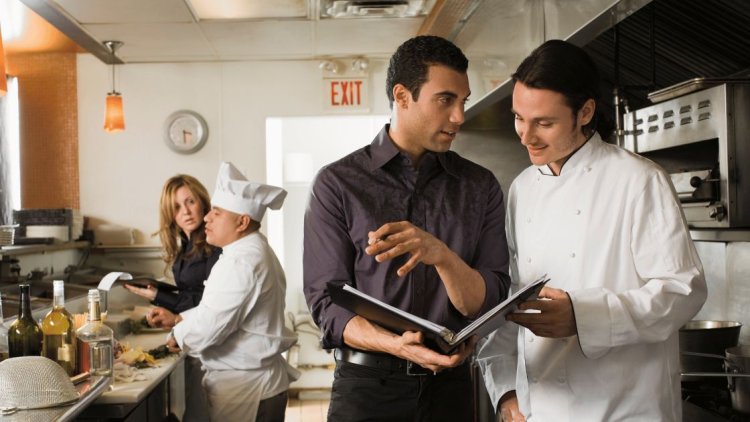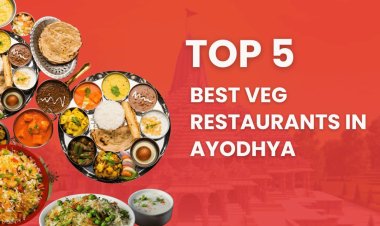How to start a cloud kitchen and be successful?
Want to start a successful cloud kitchen? Follow these tips and make your culinary dreams a reality!

Learn everything you need to know about cloud kitchens - the future of the food business. From licenses to equipment and packaging, we’ve got you covered
What is a Cloud kitchen?
Cloud kitchens are also known as "ghost" kitchens, delivery kitchens, or virtual kitchens. It is a commercial kitchen that provides food businesses, facilities and food preparation services. It focuses solely on fulfilling online food ordering and delivery.
A cloud kitchen can be a central food production hub where multiple restaurants can share resources and prepare meals. The number of air kitchens in India is expected to increase by more than 50% year on year and is considered one of the most profitable small businesses.
How does cloud kitchen work?
Unlike restaurants, cloud kitchens allow chefs to prepare and deliver meals with minimal cost and overhead. It allows restaurants to have a kitchen but not a dining area.
Air-conditioned kitchens are popular in India for 3 main reasons – convenience, choice and cost. The Cloud Kitchen can be found in a warehouse with, many workspaces, stainless steel tables and a few hoods. They may have their own online ordering website or app, or they may accept orders from various food delivery platforms. Customers can order from their mobile phones and have food delivered to their home or office.
The main income source of these internet restaurants is Swiggy, Zomato, and now ONDC etc. It is also important to have sales software that can take orders from many sources, as they are from different food platforms. This will save you the hassle of manually adding and counting orders from different services at the end of each day.

1. Space and Location
Cloud Kitchen does not have a large cooking space, so it can be installed in a small space. You can easily create a 300 square meter air kitchen. It does not require any architecture, painting or decoration. Chairs, sofas, and cutlery don't cost much.
This saves a lot of money. Cloud Kitchen's location doesn't have to be in the middle of a busy business district. Only the highest consumer demands are important for the atmosphere of our kitchens.
2. Get the necessary licenses for cloud kitchen with online payment software
If you want to open a cloud kitchen, you will need the necessary licenses and permissions depending on where you live. An air kitchen in India requires:
- FSSAI
- Goods and Services Tax
- Business License
- Fire License
At this stage, you should start looking for a cloud kitchen POS.
3. Collaboration in an aggregator based on the system
According to the aggregator website you should apply for a listing as soon as the kitchen space is complete, it usually takes 7-30 days to publish your kitchen.
You can pay these companies between 18% and 30% of your order revenue. It can be directly connected to the kitchen cloud free POS software.
Cloud Kitchen is also known as the "Internet's First Restaurant" because it is connected to the Internet.
4. Know Your Customer
The public plays an important role in the success of your cloud kitchen. Before starting a kitchen air conditioning business, you need to know your customers and who you want to work with. For example, a family needs more than young people, playing games, When the body produces protein-rich foods, families need a balanced diet.
That's why you need to get to know your customers before you come up with your food, groceries and business idea.
5. Choose a concept
How do you choose the right concept for your kitchen atmosphere? The first step is to find out what your customers are looking for. One way is to go to the internet and Google. For example, if your target customers are health-conscious people, it's important to know what kind of food they like.
You can visit different forums such as Facebook to find out your target audience's favorite dishes. There you can see the food preferences of different groups.
6. Gaining knowledge
Starting a cloud kitchen requires a lot of knowledge. In addition to the basics of cooking, knowledge of business, marketing, and raw material production can be helpful. A degree in hotel management and some work experience in the hospitality industry will help you a lot.
7. Price
Growing a restaurant is easier than you think. With the right kitchen business for delivery, you can open a new location in less than a month. Prices are 40% to 50% cheaper than in-house restaurants. Housing costs and labor costs will be less. You can pay the initial fee from your savings.
If you do not have enough money, you can ask your family or friends for help. Another option is to apply for a business loan from a local bank.
8. Equipment
Most of your initial investment will go into building your cloud kitchen. The list includes many stoves, ovens, appliances, plumbing and more. One option is to rent a cloud office with basic equipment so you can customize it for your needs.
9. Food Quality
You must keep your food quality high or your reputation will suffer. Hire a professional chef who knows your chosen cuisine well. Use fresh ingredients and try local sources.
10. Technology
You can easily track your order using technology. When a customer places an order through the app, you will be able to view the order on your phone, laptop or tablet. You can hire a chef to cook or do it yourself with the help of others.
11. Packaging
The point of contact between you and your customers is packaging. You can grow your brand with creative packaging. To reduce your carbon footprint, you can use biodegradable packaging instead of wrapping your food in plastic. Food should be sealed to prevent contamination.
12. Pandemic Precautions
While safety and hygiene have always been important in the food industry, it now needs to be taken seriously if you want your business to thrive. You must perform daily fire checks of all kitchen and delivery personnel. Employees should wash their hands regularly and the kitchen should be cleaned frequently.
13. Delivery
Accurate and timely food delivery means more customer satisfaction. Alternatively, you can use online delivery services such as Swiggy and Zomato to make delivery easier. Another option is to build your own food truck serving popular dishes like chicken pizza or biryani.
14. Menu Flexibility
Web/app based ordering in cloud kitchen provides more flexibility in setting the menu and can avoid price based on meal cost based on customer feedback without printing costs. This also helps reduce food waste.
15. Kitchen Staff
There is no restaurant or dining area, there is no need for a waiter in Bulut Kitchen, a highly skilled kitchen staff is needed. The only thing your customers come in contact with is your food, so it should be fine. That's why it's important to invest in skilled chefs who can identify food items and prepare them well.
In a cloud kitchen, the same chef will prepare different meals and each brand will choose a different chef. You can easily run a cloud kitchen with 2-3 chefs and a few helpers. Also, a delivery guy is only needed if you plan to do home delivery and help in the kitchen.
16. Managing Vendors
Although choosing a vendor for an outdoor kitchen is no different from a restaurant kitchen, you still need to find the combination that works best for you. If your business has the same materials but some materials are different, you can order basic materials from the same supplier and bulk materials from different suppliers.
If your supplier has more than one ingredient, you can order all types from the same supplier. Just like in grocery stores, you should take care that your kitchen equipment is on time and in order. When verifying the sender, also make sure you write your message well.
According to the cloud kitchen you may want to order from different suppliers, keep in mind that it will cost more if you order small items from different brands, although it is not necessary to facilitate your knowledge. On top of that, you become a minor customer of the service provider, which means you cannot benefit from your message.
Before finalizing your supplier, we recommend that you list all the materials you need from each brand and try to order as many materials as possible from the same supplier. This will make it easier to keep track of inventory, you'll have someone in charge, it'll be easier to coordinate in case of changes, and you'll save money.
How to market cloud kitchen?
Marketing a cloud kitchen requires a multi-faceted approach to reach potential customers and build a loyal customer base. Here are some effective ways to market a cloud kitchen:
Social Media Marketing: Use social media platforms like Instagram, Facebook, and Twitter to showcase your food, share photos, and videos of your kitchen, and engage with your followers. Use paid advertising to reach a wider audience.
Online Food Aggregators: Partner with popular online food aggregators such as Zomato, Swiggy and now ONDC to increase visibility and attract new customers.
Influencer Marketing: Collaborate with food bloggers, social media influencers, and food critics to create buzz around your brand and generate interest in your menu.
Email Marketing: Use email marketing to keep your customers informed about your menu updates, new deals, and discounts.
SEO Optimization: Optimize your website with relevant keywords to improve your search engine rankings and attract more organic traffic.
Promotions and Deals: Offer promotions and discounts to attract new customers and incentivize repeat purchases.
Customer Reviews: Encourage satisfied customers to leave reviews on platforms like Yelp and Google Reviews, as positive reviews can attract new customers and build trust in your brand.
PROS AND CONS OF CLOUD KITCHEN
Pros:
Easy ordering process - cloud kitchen runs most of the food online to take orders. But sometimes it can be difficult to order from various online ordering sites such as Swiggy, Zomato, Foodpanda. Businesses can simplify this process by installing a cloud-based POS that allows all orders to be centralized.
Low Operating Costs - You save significantly on real estate and operating costs because you do not include desk services and only deliver.
Easy expansion - Investors don't need big investments to get started. You can start small, but quickly scale up. Once you've built your brand and gained loyal customers, it's easier to expand into new areas or even new menus.
Cons:
Create a customer relationship without the personal touch: Now everything is virtual and no one will be in your kitchen, it is difficult how to create your goals and relationships.
Niche customers: Air kitchens are only available to tech-savvy customers.
Limited Brand Presence: Traditional restaurants have physical characteristics that make them effective in creating a brand presence in the market.
Also Read: India's top 5 restaurant management software
What's Your Reaction?
 Like
18
Like
18
 Dislike
0
Dislike
0
 Love
3
Love
3
 Funny
0
Funny
0
 Angry
0
Angry
0
 Sad
0
Sad
0
 Wow
6
Wow
6







































































































